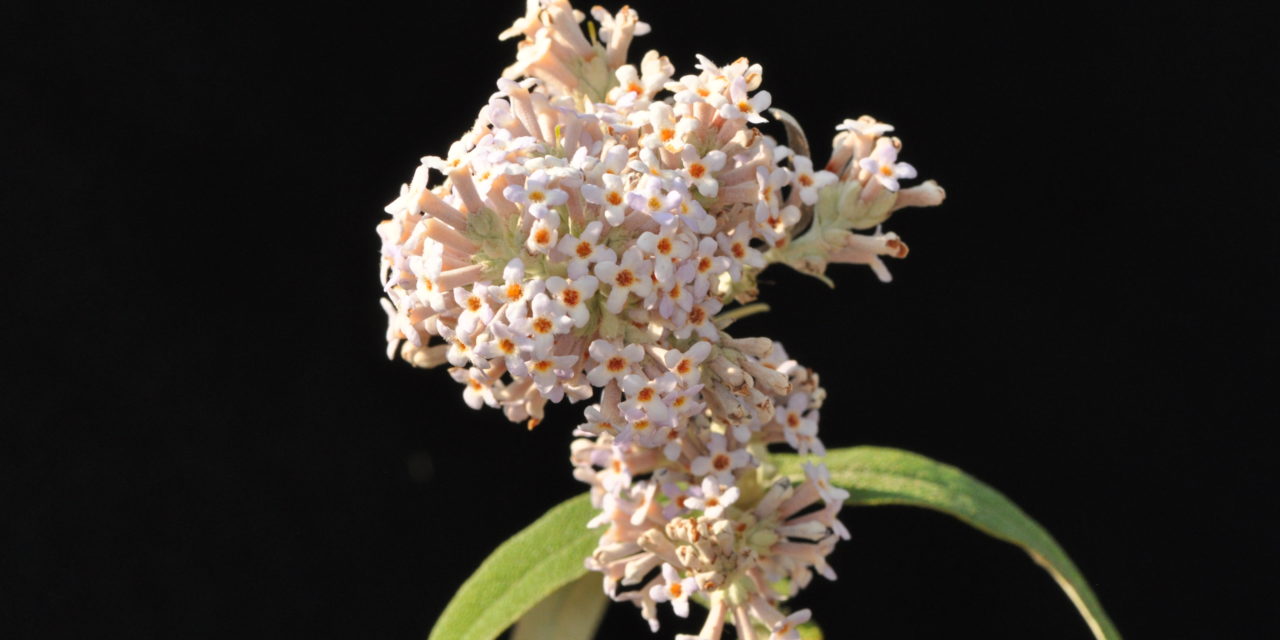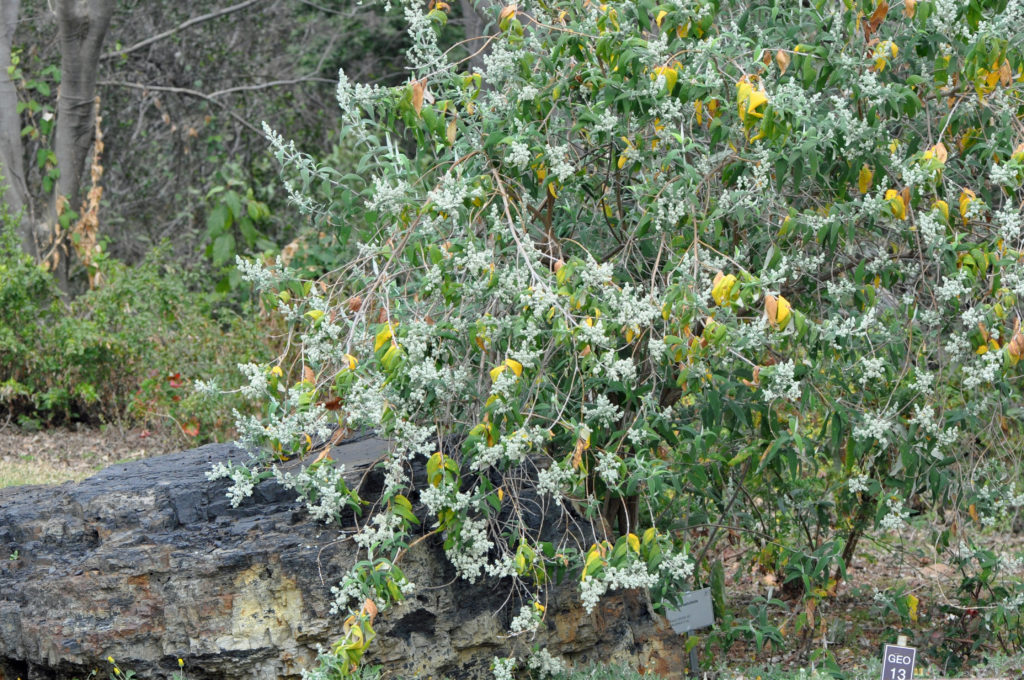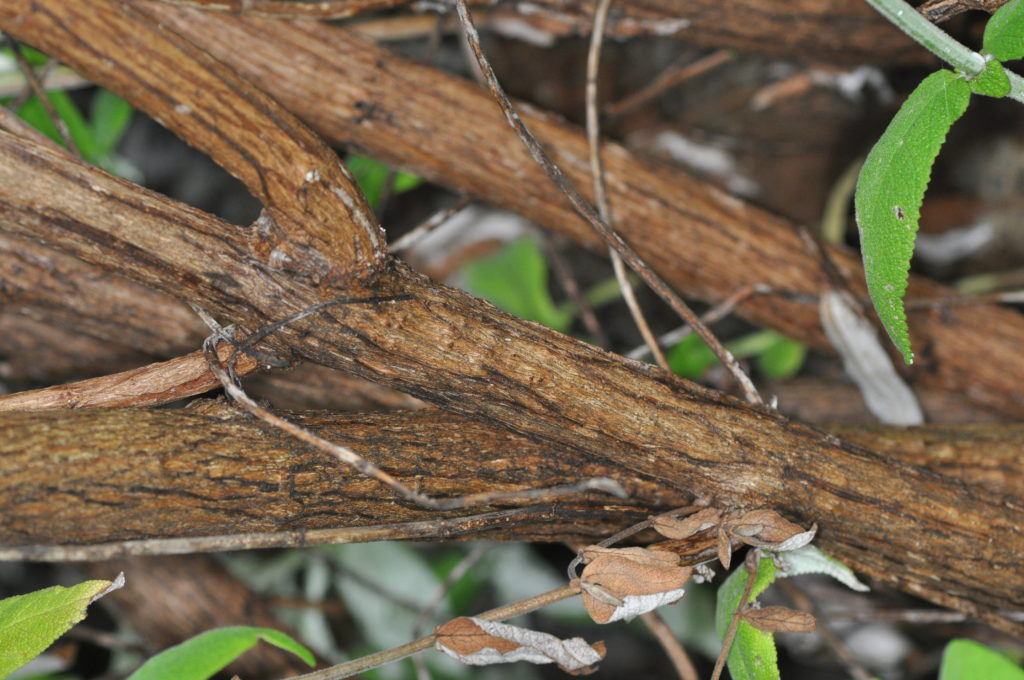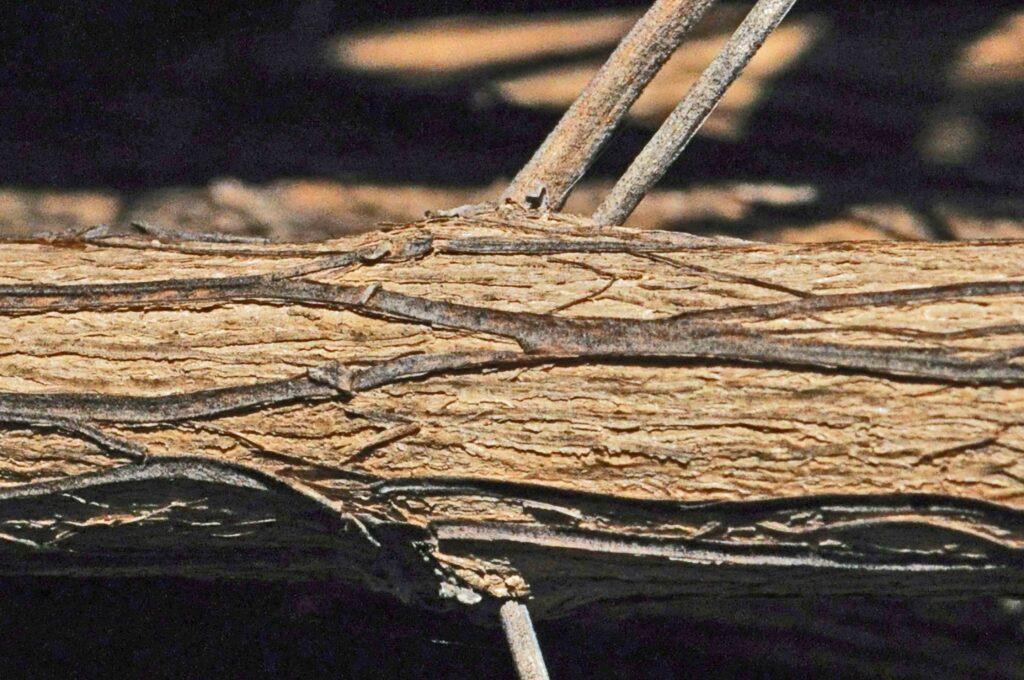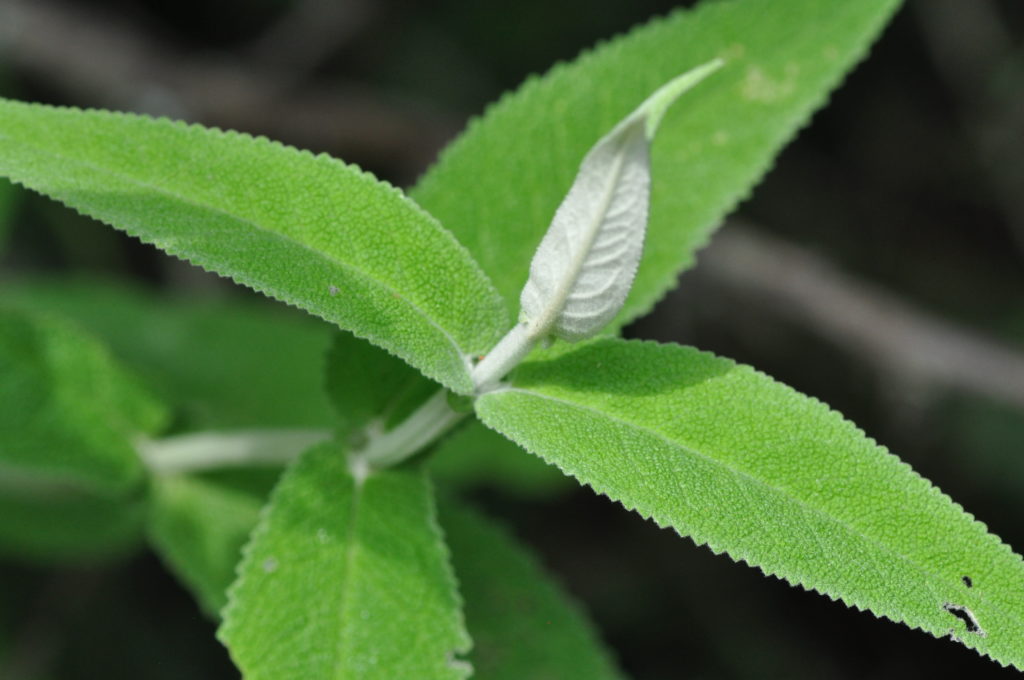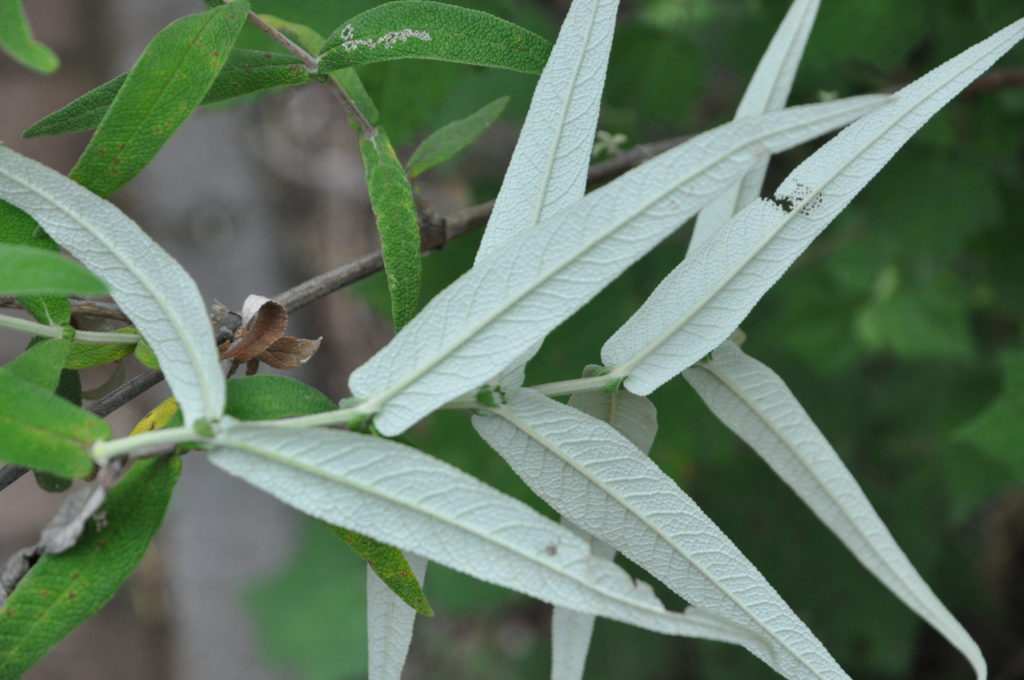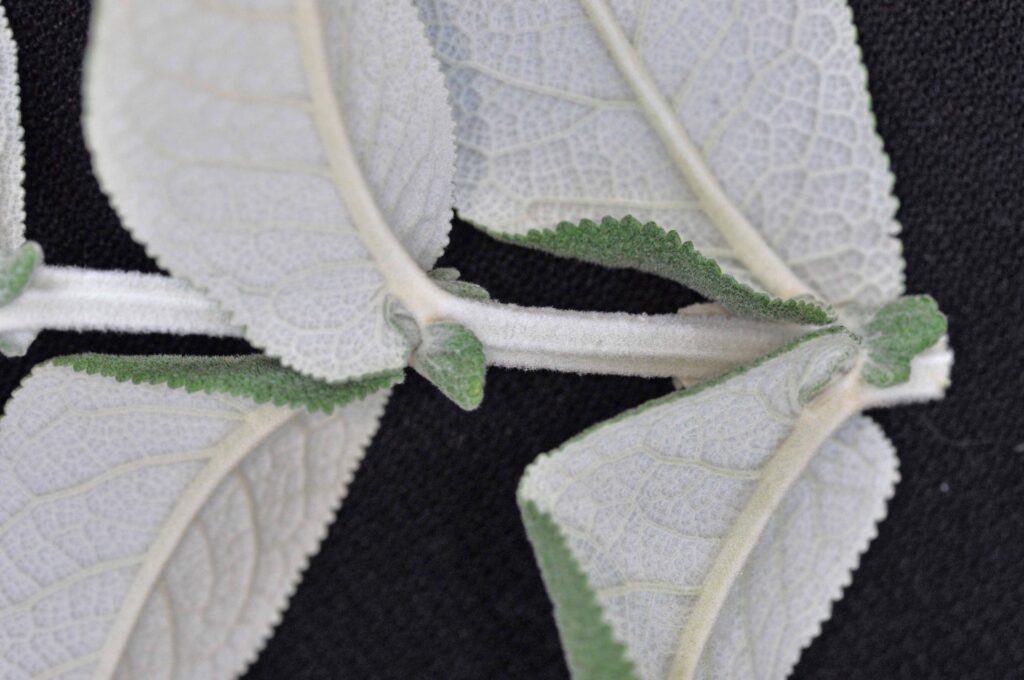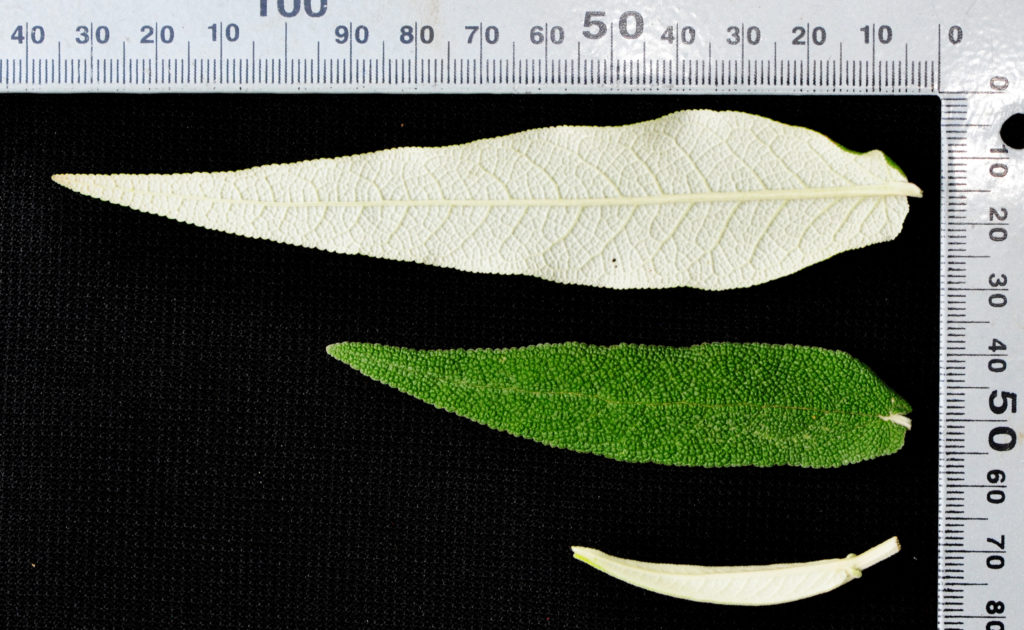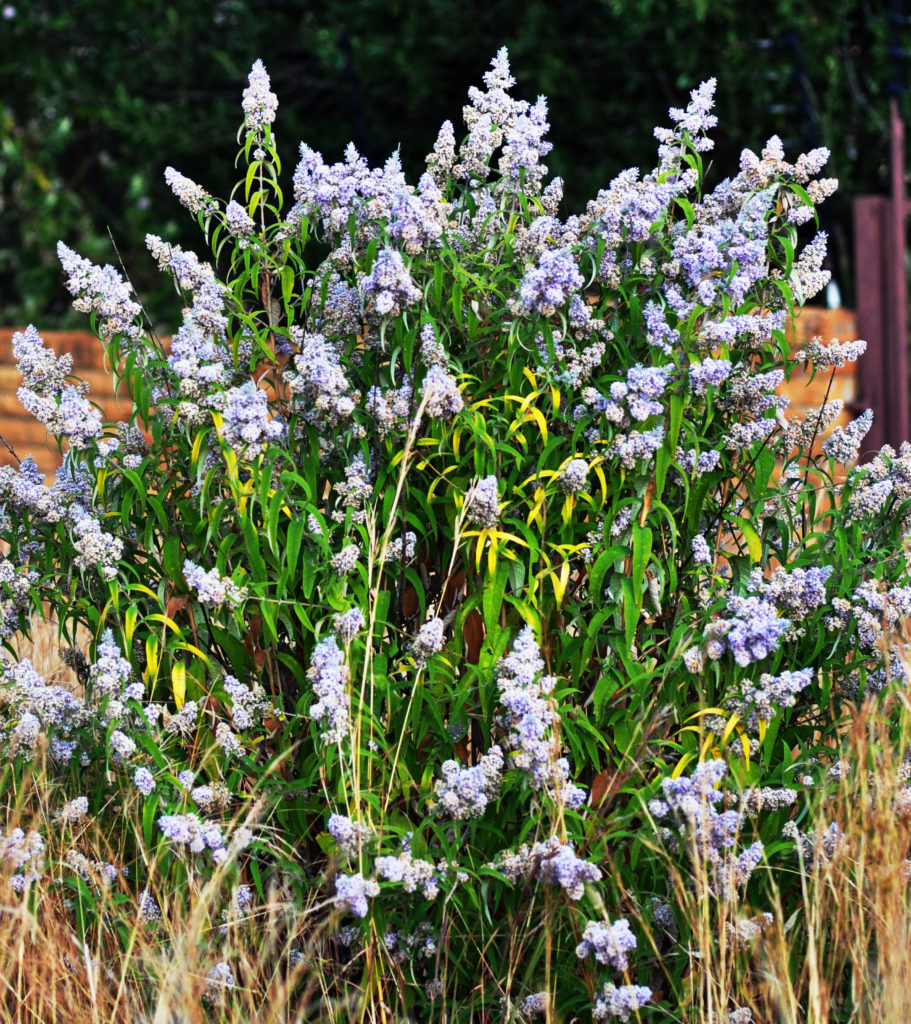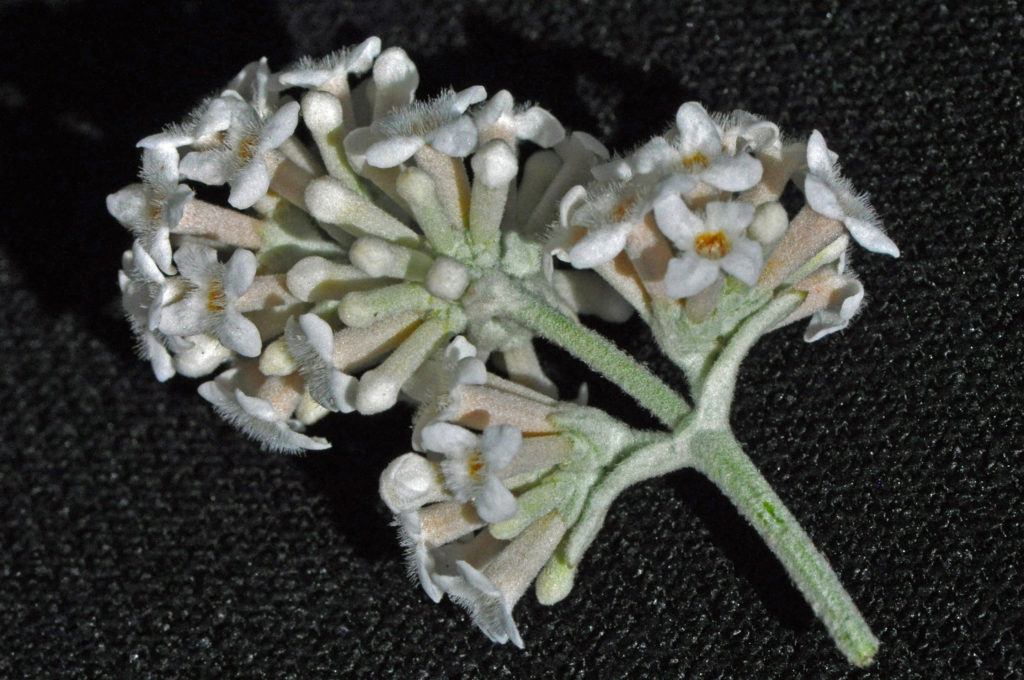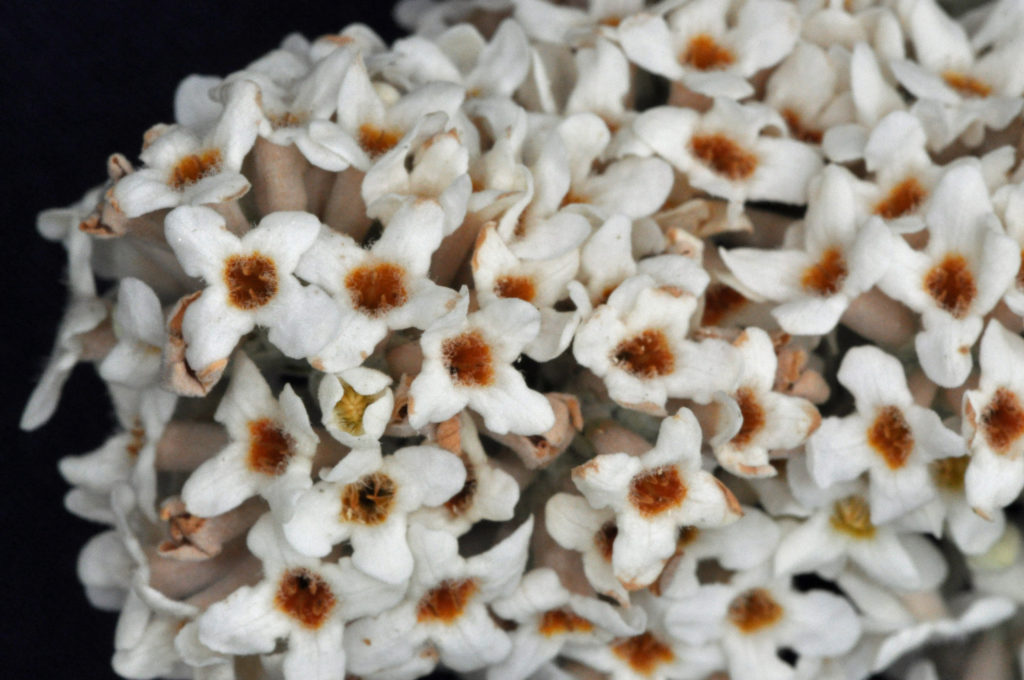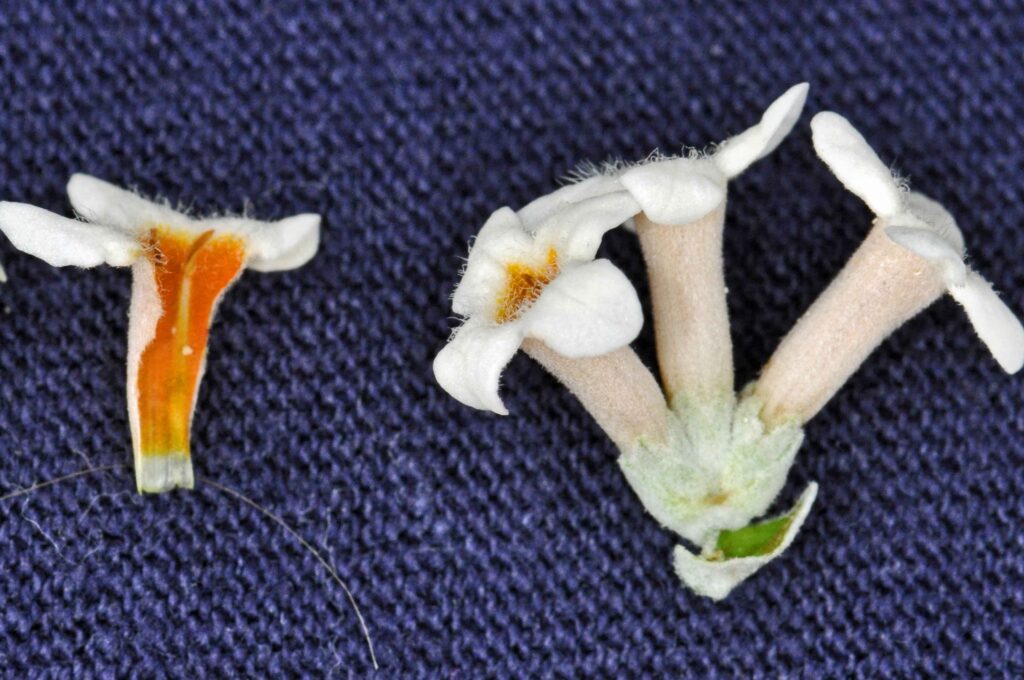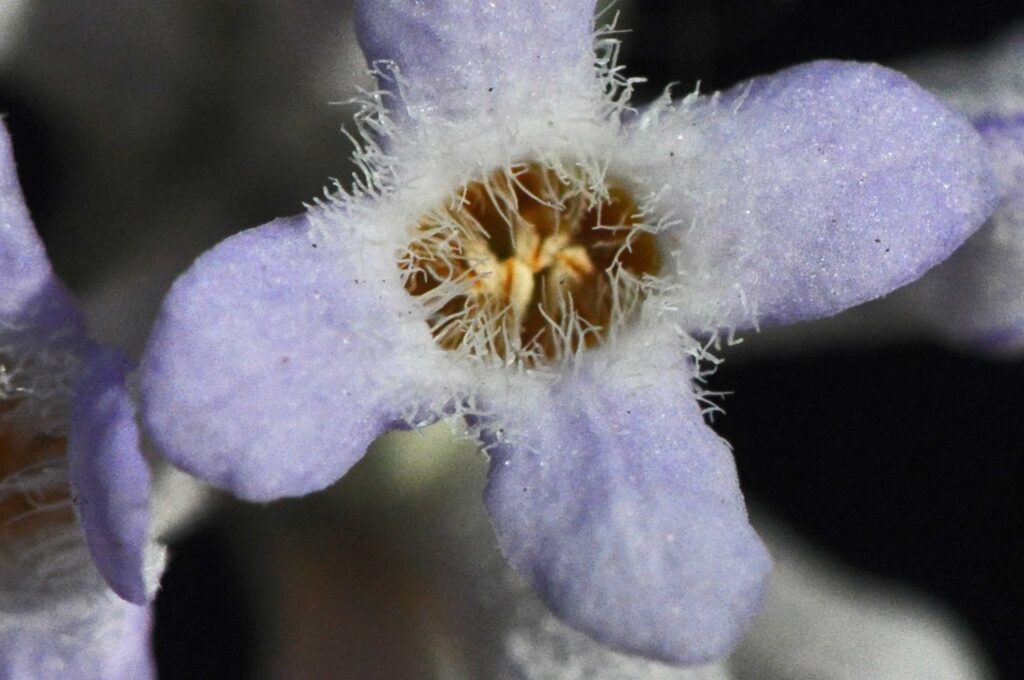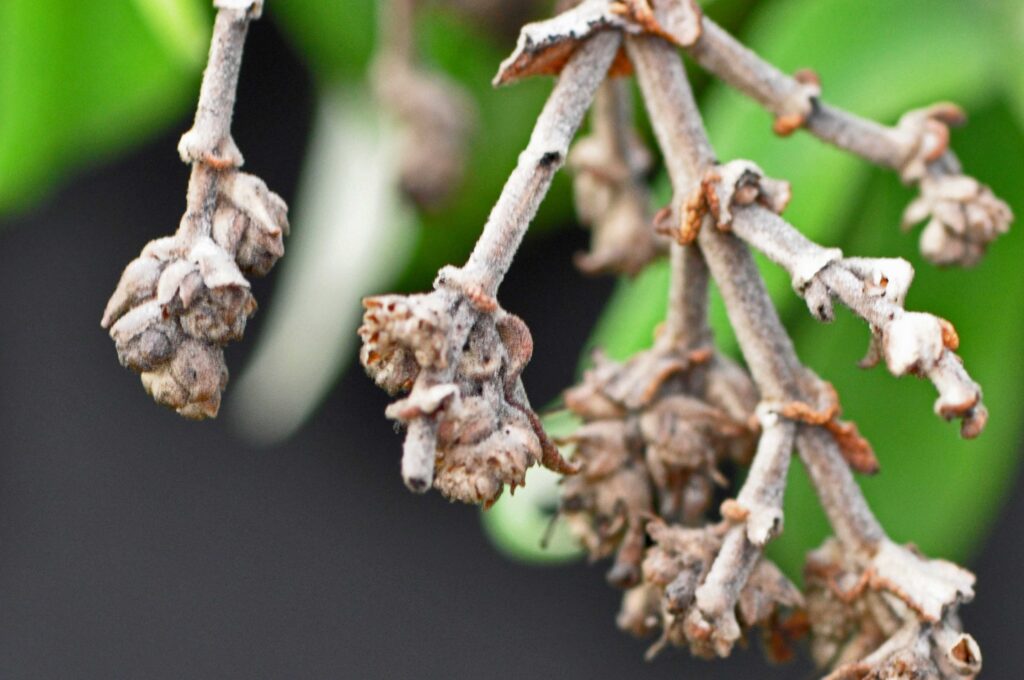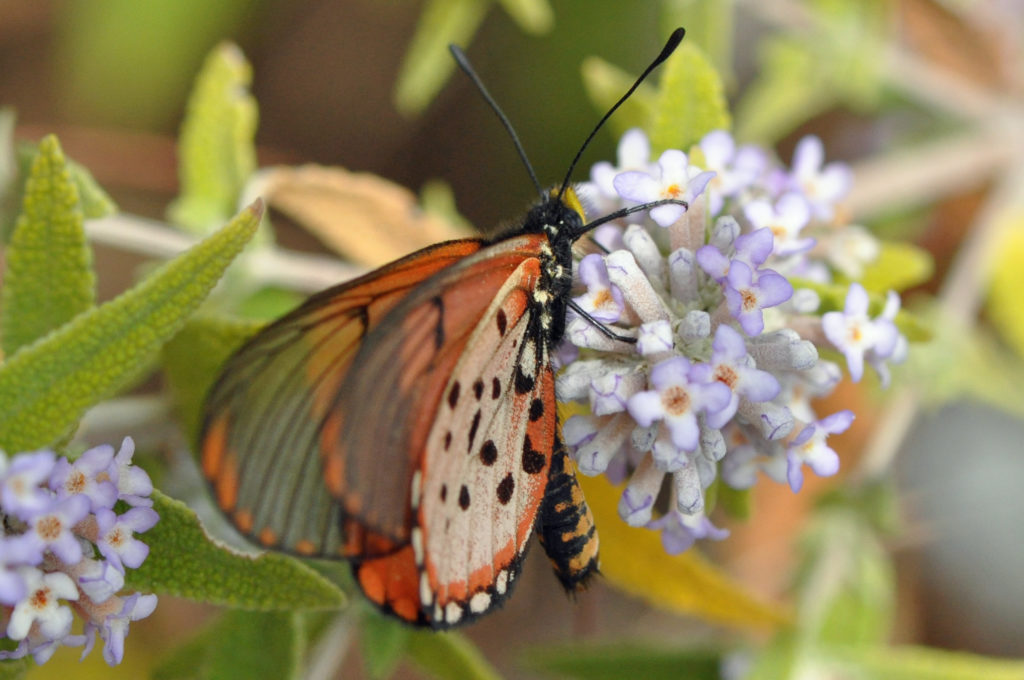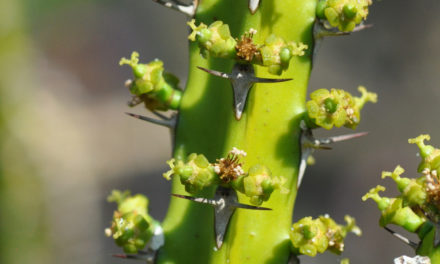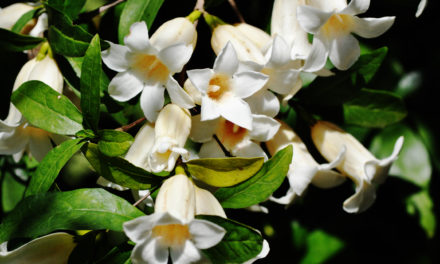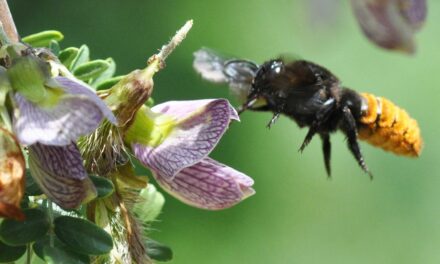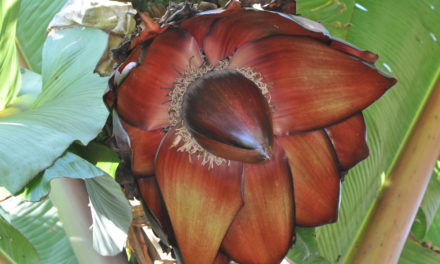General Info – summary
Tree to 8m high, or a scrambling shrub. Roughly, rectangular branches hang down. Simple lanceolate, discolorous, decussate Leaves have green interpetiolar stipules. Scented, small, 4-merous, regular Flowers are in panicles. The 4 stamens stay within the flower mouth. The single pistil has a superior pubescent ovary. The ovoid, hairy Fruit is a small capsule, with a persistent calyx and oblong seeds.
Description
Buddleja salviifolia
Previous Names: Lantana salvifolia, Buddleia salvifolia, Buddleia aurantiaco-maculata.
SA Tree No. 637.
Common names: (Afr) Bergsalie, Bergsaliehout, Kleinsalie, Kleinsaliehout, Salie, Salieboom, Saliebos, Saliehout, Vaalbos, Wild Buddleja, Witsalie. (Eng) Butterfly Bush, Mountain Sage, Olive Buddlega, Quilted Sagewood, Sagewood, Wild Sage. (isiXhosa) Cwangi, Icwanci, Igqange, Igwangi, Ilotana, Ilotyane. (isiZulu) Iloshana. (Northern Sotho) Molalathau. (Setswana) Lelothwane, Umbatacwepe. (Tshivenda) Mudiatholana.
Family: Scrophulariaceae (figwort family). The simple Leaves lack stipules and are usually opposite and/or alternate. The bisexual Flowers are usually zygomorphic (irregular flower: when corolla is divisible into 2 equal halves in one plane only). The calyx is 4-5 lobed and there are tubular corollas with 2 lips. Usually 4 stamens are present and are usually didynamous (2 long and 2 short). The superior ovary is usually bilocular and contains many ovules. The style is terminal, simple and the stigma is entire or has 2-3 lobes. The Fruit is usually a capsule. There are usually 1 to many Seeds per locule. In this family, there are about 65 genera and more than 1 600 species. In southern Africa, the genera with trees included on this website are Buddleja, Dermatobotrys and Freylinia.
Name derivation: Buddleja named to recognise Rev Adam Buddle 1660-1715. He was an English botanist who trained at Cambridge University. His herbarium formed part of the foundation collections of the British museum. salviifolia – with leaves like Salvia farinacea. (sage – indigenous in Mexico and the southern USA). The genus Buddleja has 7 tree species in southern Africa.
Conservation: National Status: L C. (Least Concern). Assessment 2005 (W. Foden and L. Potter).
Tree
This may be a small Tree – up to 8m high in high rainfall areas but is often a multi-stemmed, scrambling shrub. Without flowers, it appears greyish. The up to 20cm in diameter main Stem/trunk is the main axis of the plant, the leaf and flower bearing as distinguished from the root-bearing axis. The other axis is the root.). The long, slender and roughly 4-angled, arching young Branches arise from the base and may reach ground level (photo 844). Due to a dense covering of whitish hairs, the young branches are white in appearance (photo 107 – under Leaves). On the main stem, the Bark is reddish-brown and rough with thin darker strips running more or less lengthwise (photo 435). These slighter protruding thinnish darker strips expose the younger much lighter, sections between them (photo 97).
- 844 2015/08/11 Walter Sisulu NBG. Photo: David Becking.
- 435 2014/12/09 Walter Sisulu NBG. Photo: David Becking.
- 97 2016/05/31 Walter Sisulu NBG. Photo: David Becking.
Leaves
The simple, drooping, softly textured and opposite (photo 518 & 493) Leaves are decussate (arranged in pairs, each at right angles to the next pair above or below i.e. rotated 90 degrees along the stem when viewed from above). Individual leaves are broadly or more usually narrowly lanceolate and up to 15 x 4cm (photo 327). Scattered yellow leaves are common (photo 844 under Tree and photo 08 under Flowers). Both sides of young leaves are hairy. The leaf Blade of this slightly deciduous plant is discolorous (having upper and lower surfaces of leaves different colours). The upper side becomes dark green to grey-green. Here the veins are so deeply sunken as to give the surface a heavily wrinkled appearance (photo 518). With a hand lens, the short white hairs are visible. These hairs are especially noticeable on the margins. The underside (photo 493) of the leaf is whitish with conspicuously protruding midrib and net veining. The Apex is narrowly tapering. The Base is notched or lobed and decurrent (leaf blades that partly wrap or have wings around the stem or petiole – photo 107). This may partly hide the short or absent Petiole (leaf stalk). The thickened, rolled under Margin is hairy and has small, slightly forward pointed teeth (photo 518). The small, dark green Stipules (basal appendages of the petiole) may be leaf-like and are interpetiolar (between 2 leaf petioles). Because of the dark green colour, the stipules are more distinct on the lower whitish side of the leaf (photos 493 & 107). Each stipule is up to 8mm long.
- 518 2014/01/21 Walter Sisulu NBG. Photo: David Becking.
- 493 2014/01/21 Walter Sisulu NBG. Photo: David Becking.
- 107 2016/05/31 Walter Sisulu NBG. Photo: David Becking.
- 327 2016/02/23 Walter Sisulu NBG. Photo: David Becking.
Flowers
The sweetly scented small Flowers are arranged in impressive terminal Panicles (indeterminate, branched inflorescences with stalked flowers) in large pyramidal heads at branch ends (photo 08). Each head of flowers is up to 12cm long (photo 08) and rests on one hairy Peduncle (here the stalk of the panicle). Individual flowers are small, up to 1cm long (photo 712) and each is supported by a short and hairy Pedicel (stalk of a single flower). Each bisexual flower is actinomorphic (Regular, symmetrical. Flowers are vertically divisible into similar halves by more than 1 plane passing through the axis). The persistent Calyx is small (photo 630) and has 4 Sepals that are greenish and externally hairy. The Corolla has 4 petals that extend horizontally from a relatively long tube before becoming recurved (photo 630). The junction of the tube and the lobes is hairy (photo 728). Petal colours vary from white, to grey to cream, mauve or purple (photo 08). The inside of the tube is usually a dark orange colour (photo 630) and the mouth of the tube may be a lighter orange. The 4 Stamens are attached to the petals within the corolla tube and do not emerge beyond the hairy mouth (photos 630 and 728). The Anthers are basifixed (photo 630) and shed pollen through longitudinal slits. There is a single Pistil (a unit of the Gynoecium, the female element of the flower, composed of the Ovary, Style and Stigma). Here the superior, 2 locular Ovary is pubescent (with dense, fine, short, soft hairs). (Early in Aug-Oct).
- 08 2015/09/08 Northcliff Tower. Photo: David Becking.
- 712 2016/08/30 Walter Sisulu NBG. Photo: David Becking.
- 627 2017/08/01 Walter Sisulu NBG. Photo: David Becking.
- 630 2017/08/01 Walter Sisulu NBG. Photo: David Becking.
- 728 2018/08/22 Walter Sisulu NBG. Photo: David Becking.
Fruit
The small, ovoid and hairy Fruit is a dehiscent Capsule (a dry fruit resulting from the maturing of a compound ovary – of more than one carpel – usually opening at maturity by one or more lines of dehiscence). It is about 4 to 5 mm long and protrudes from the persistent calyx. (Oct-Dec).
- 434 2014/12/09 Walter Sisulu NBG. Photo: David Becking.
Distribution & Ecology
Apart from reduced amounts in Northern Cape of South Africa, this plant is widespread in all provinces below 1 800m but sparse in the Northern Cape. It is common on rocky hillsides, forest margins, streams and gullies. These plants occur on rocky mountains, in or close to evergreen forests and at higher altitudes – along water courses. Places of interest for this tree include the KwaZulu-Natal Drakensberg (including Royal Natal National Park) and near Pretoria and Johannesburg e.g., Melville Koppies. It is also found in Lesotho, eastern highlands of Zimbabwe, Malawi, Tanzania and the western part of north and central Mozambique. The trees are both frost hardy and salt spray resistant and usually recover quite quickly after a fire. It is often a Pioneer species (these plants are hardy species which are the first to colonize previously disturbed areas). Flowers attract birds, bees and butterflies e.g., the Garden Acraea (Acraea horta – photo 207) with a yearlong flight period. They also feed on Kiggelaria africana. During dry periods when the grass is less nutritious the leaves are browsed by game – including eland – seen at Giants Castle.
- 207M 2014/09/23 Northcliff Tower. Photo: David Becking.
Ethnobotany
The pale-yellow Wood has a brown heartwood. It is hard, dense, and is used to make excellent fishing rods, panga (a broad bladed knife) handles and gunstocks. Aromatic herbal tea is made from fresh or dried leaves. The fast-growing plants are easy to grow from cuttings or seeds. Young plants need to be protected from frost. If pruned carefully, the plant makes a good hedge. It is used to stabilise soil and is a cold hardy, attractive and evergreen garden plant. Local medicine makes use of the roots and leaves.
References
Boon, R. 2010. Pooley’s Trees of eastern South Africa. Flora and Fauna Publications Trust, Durban.
Burrows, J.E., Burrows, S.M., Lotter, M.C. & Schmidt, E. 2018. Trees and Shrubs Mozambique. Publishing Print Matters (Pty) Ltd. Noordhoek, Cape Town. 2018.
Coates Palgrave, M. 2002. Keith Coates Palgrave Trees of Southern Africa, edn 3. Struik, Cape Town.
Foden, W. & Potter, L. 2005. Buddleja salviifolia (L.) Lam. National Assessment: Red List of South African Plants version 2020.1. Accessed on 2021/12/08.
Lawrence, G. H. M, 1951. Taxonomy of Vascular Plants. The Macmillan Company, New York. Tenth Printing 1965.
Palmer, E. & Pitman, N. 1972. Trees of southern Africa. Balkema, Amsterdam, Cape Town.
Schmidt, S. Lotter, M. & McCleland, W. 2002. Trees and Shrubs of Mpumalanga and the Kruger National Park. Jacana, Johannesburg.
van Wyk, B. & van Wyk, P. 1997 Field guide to Trees of Southern Africa. Struik, Cape Town.
http://www.plantzafrica.com/plantab/buddlsalv.htm
http://pza.sanbi.org/buddleja-salviifolia
https://en.wikipedia.org/wiki/Buddleja_salviifolia
http://kumbulanursery.co.za/plants/buddleja-salviifolia
http://posa.sanbi.org/flora/browse.php?src=SP

